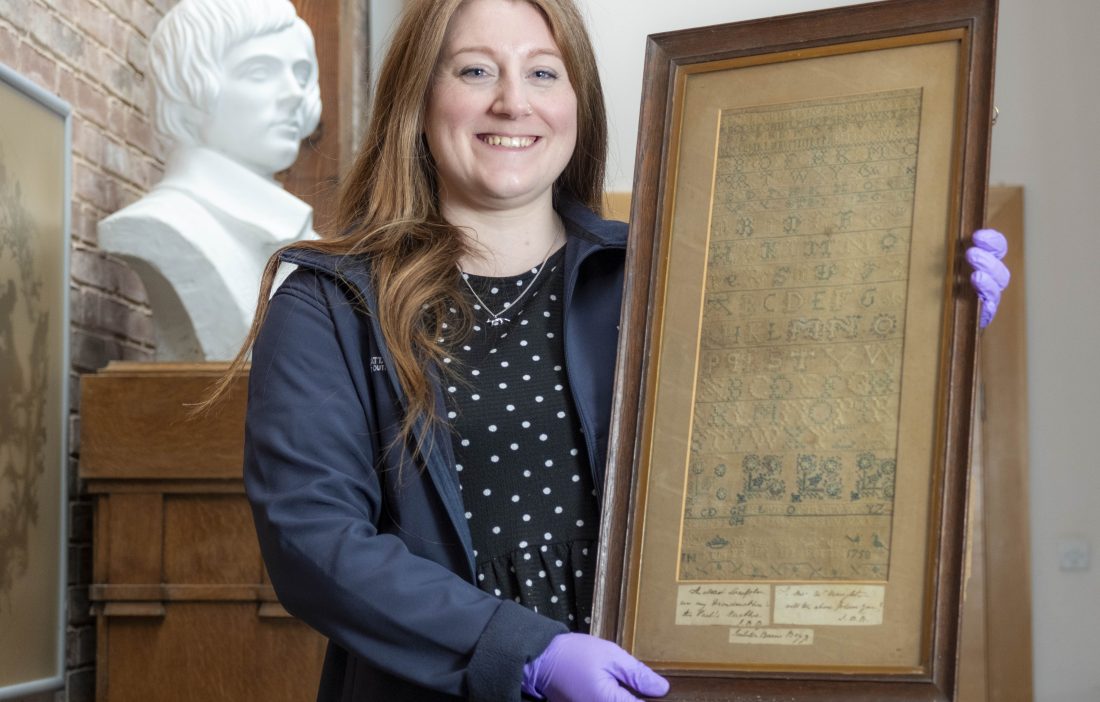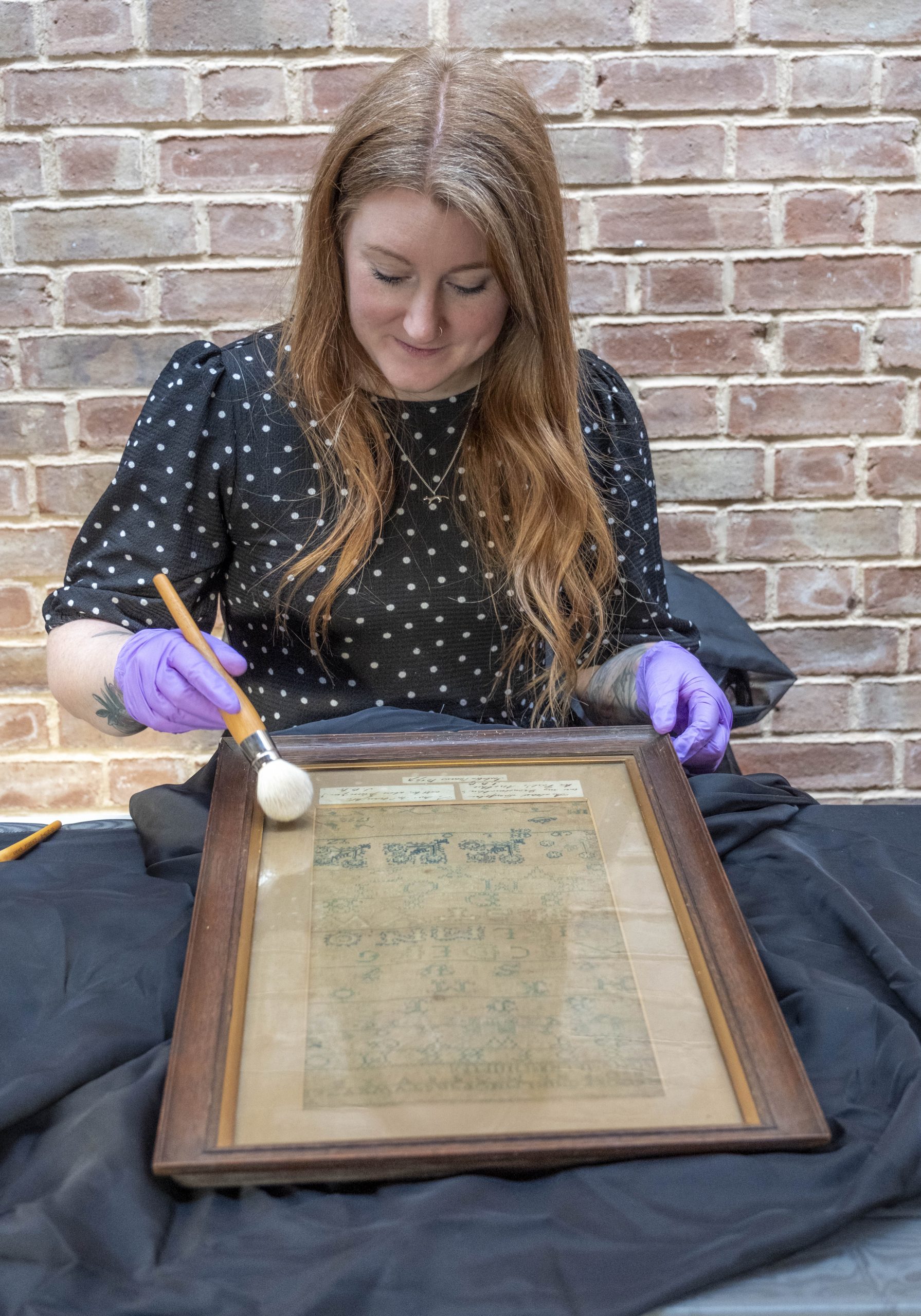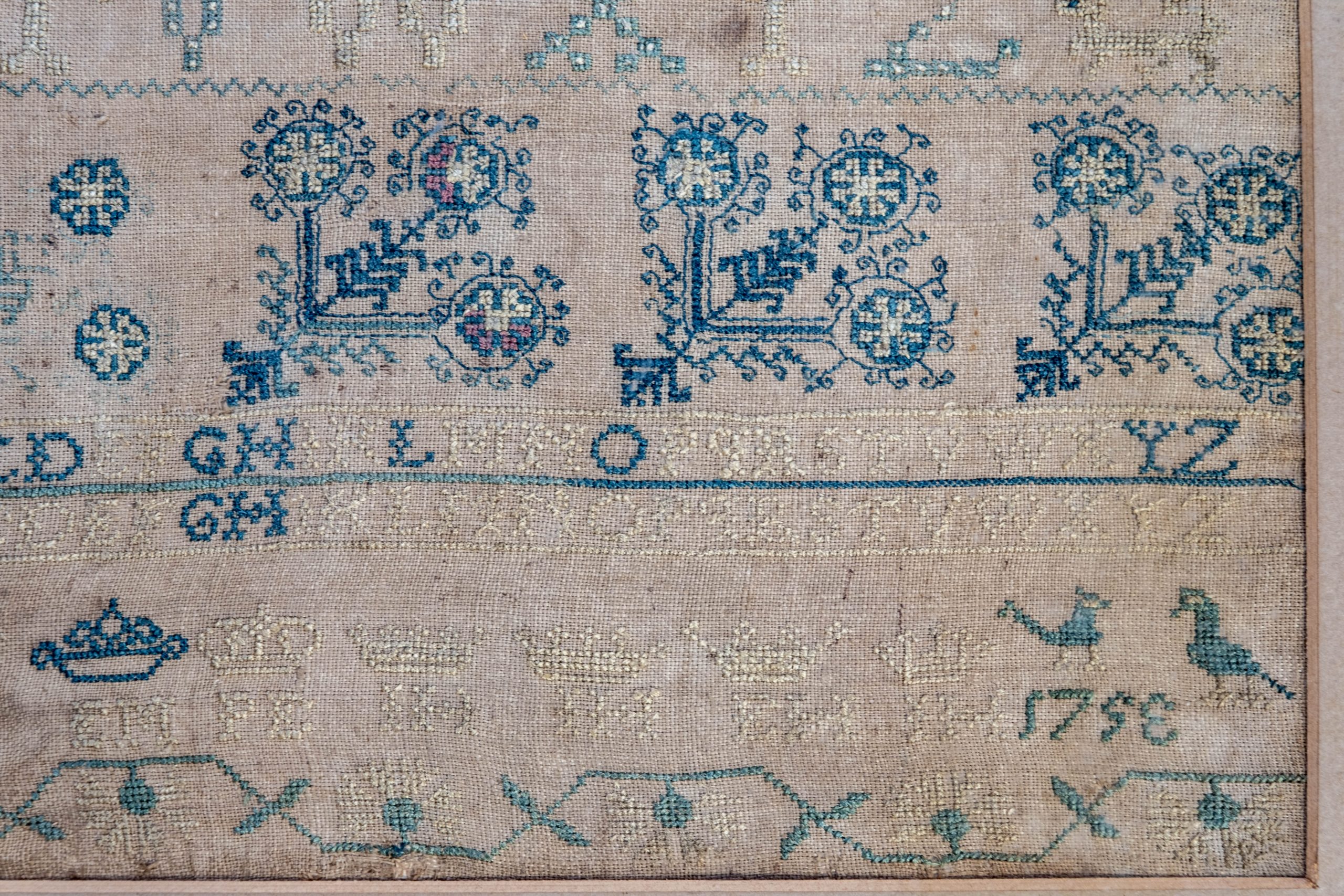
Rare Burns family needlework samplers returned to Scotland
Two rare needlework samplers thought to have been embroidered by Robert Burns’s sister and mother have been returned to the poet’s birthplace.
The two samplers, one attributed to the poet’s mother, Agnes Broun and the other to his youngest sister, Isabella Burns (later Isabella Begg), had been held in a private collection in the south of England for many decades.
Thanks to the support of American collector and philanthropist Leslie B. Durst, the National Trust for Scotland has been able to bring the samplers, featuring intricate embroidery of the alphabet, coronets, and floral and animal motifs, back to the poet’s birthplace in Alloway to conserve them for the nation.
‘We don’t know of any other samplers embroidered by Agnes Broun or Isabella Burns, so these two works are very special additions to our charity’s collections and to Scotland’s Burns heritage,’ said Sarah Beattie, senior curator at NTS.

‘Samplers are an important part of Scotland’s social history, giving us insights into the lives, education, interests and talents of the girls and young women who created them.
‘It’s wonderful to get new insight into the lives of Burns’s closest female relatives through the lens of these samplers.
‘Most striking is the repetition of the stylised floral motif that appears towards the bottom of the larger sampler and on the left side of the small square sampler.
‘The occurrence of this design across both textiles supports the provenance to mother and daughter, and it’s easy to imagine the young Isabella Burns unrolling her mother’s sampler and diligently copying the familiar patterns.’
The frames of the samplers also tell an interesting story, with handwritten labels providing insights into how the samplers passed from the Burns family into the ownership of the MacNaughton family in Dumfries.

‘The labels suggest they were given to Mrs MacNaughton, the wife of the Reverend George MacNaughton, by Isabella Burns Begg, the poet’s niece,’ Sarah said.
‘Isabella died in 1886 so they were probably passed on in the early 1880s, after the MacNaughtons were married but before Isabella’s death.
‘Whether this was a gift or purchase is sadly unknown, but it is interesting to see how Burns’s descendants contributed to the memorialisation of his life, work and legacy in the decades that followed his death.
‘Also fascinating is the later history of the samplers, for they then became part of the fabric of Scotland’s wider history.
‘Both featured in the grand ‘Palace of History’ at the ‘Scottish Exhibition’ in Glasgow in 1911, which showcased historic and cultural items from public and private collections across Scotland; Agnes Broun’s sampler still has the original early 20th-century frame and both have the labels from that exhibition, showing that they were loaned by Reverend MacNaughton.
‘Through such details and their histories, these samplers enrich our Burns collections and allow us to explore new areas of social history and women’s history through the life of Burns and his family, and we look forward to conserving them and sharing them with visitors and supporters.’
Following the acquisition of the two samplers, National Trust for Scotland conservators are currently working with specialist textile conservators to assess the condition of the two samplers, before finalising plans for treatment and framing so that they can be safely displayed and shared with the public.
TAGS

